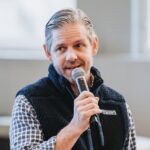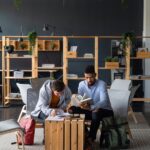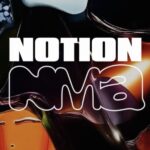Spending time stuck in traffic has become part of our lives, especially when commuting to work or school. We all despise rush hour when everyone powers up for the day or goes home, and there’s no end to the infinite line before reaching the traffic lights.
We’re losing precious time on the road ―about 51 hours yearly, but each hour lost in traffic is the equivalent of $16.89 in the US, according to US Federal Highway Administration data. So, we waste time and money on road congestion with no solution in sight.
Many have suggested that the lack of roads is the leading cause of this problem. Since cities expanded and the population increased along with the ability to get a vehicle, the need for more adequate roads escalated. But won’t additional roads deepen the problem as customers’ buying power increases? Let’s find out.
More Roads, More Accidents
New York is a busy city, so congestion is considerable. But what’s less frowned upon is the increasing number of road accidents from 2019 until now. The Centres for Diseases Control and Prevention revealed 1,175 motor vehicle fatalities in 2023 in NY. Fatalities are usually caused by speeding or BAC (Blood Alcohol Content) levels above the legal limit.
Unfortunately, pedestrians are the primary victims in these situations. Those involved in a traffic collision are generally injured in the lower extremities, such as the leg and the knees, followed by accidents to the head and upper extremities. In most cases, people can make an injury claim and receive compensation if they can prove the breach of the driver’s duty of care.
But what if we could avoid accidents?
The Traffic Paradox
The traffic paradox suggests that building more roads will solve traffic congestion. However, this is far from the truth. In the economy, when the supply of something increases, demand will automatically follow the same dynamic. Traffic engineers highlighted the induced demand effect long ago, but we can see its consequences now when open markets and new technology allow anyone to own a car.
If we were to build more and larger roads, traffic would seem clearer initially. Yet, as time passes, we’ll see that congestion is back due to the higher road supply. Therefore, the solution lies in providing people with more alternatives to transport, especially in crowded cities.
Another formula for fighting traffic congestion would be introducing a certain cost for using road segments. For example, when the Abraham Lincoln Bridge connecting Louisville, Kentucky, and Indiana was built, drivers had to pay a toll of $2 to cross it, significantly decreasing the number of vehicles passing daily.
On Alternative Transportation Methods
Besides driving traffic congestion, using a car also harms the environment. Vehicles burning fuel, mostly carbon dioxide, pollute the air and affect people’s lives. Therefore, increasing vehicles have heavily contributed to global warming over time. A regular passenger vehicle generates about 4.6 metric tons of carbon dioxide yearly. Considering that the number of licensed drivers in the US is growing consistently, along with the population, we can see how the damage is done.
It may be possible to slow down these effects by introducing more alternative transportation modes and investing in infrastructure and education so people can commute faster and easier by bus or bike. Of course, ideally, it would be easy to walk from point A to point B. Italy’s Florence is known as the most walkable city, but it’s considerably smaller than New York, so making it walkable might not be easy.
Alternative transportation includes:
- Biking, which is more energy-efficient, doesn’t pollute as much as vehicles do and sustains a healthy lifestyle;
- Taking the bus reduces traffic congestion and the amount of fuel per passenger;
- Rail systems are the best long-term investments for transportation and don’t contribute to traffic congestion;
Investing in Road Safety
We’ve all experienced road congestion and felt nerve-wracking every time. Unfortunately, some people give in and are prone to road rage and drive dangerously. Whether running red lights to save time or speeding to get in front of others, this behavior only leads to mistakes and dangers.
Another scenario involves drivers who are distracted during traffic congestion. They use their phones for texting, eating, or doing anything else to overcome boredom. However, this distracts them from potential risks, such as drivers who weave in and out of traffic and are not able to protect themselves from a collision.
In addition, accidents happen when drivers suddenly make a U-turn to take an alternative road. Sideswipes are also dangerous because they are usually the result of a split-second decision, so drivers haven’t taken all the precautions before moving.
Road Safety Education Matters
Educating pedestrians and drivers on road safety should spread awareness of the serious problem. For example, many pedestrians use their smartphones when crossing the streets or listening to music on their headphones, impairing their attention. When drivers do the same, accidents become inevitable.
Traffic safety education can lower the number of accidents, which is why we need more:
- Public campaigns that include online graphics, striking billboards, and social media advertisements that promote safe habits;
- School-based programs with interactive workshops on traffic safety;
- Community engagement and partnerships with law enforcement, local businesses and hospitals;
In addition, we need more data-driven traffic studies that could help improve the law. For example, studying traffic patterns in specific traffic regions, conducting more speed studies, and predicting future trends based on historical crash data.
What Do You Think About the Traffic Congestion Paradox?
When it comes to driving, we often notice how there are not enough roads to contain the increasing number of vehicles. However, that problem is due to poor infrastructure and people’s demand and affordability to own a car. Hence, building more and wider roads will not solve the congestion problem and will only increase car ownership. The answer lies in creating accessible and affordable transportation modes, aiming to make cities as walkable as possible, and spreading awareness of driving safety.
Published by Stephanie M.
















